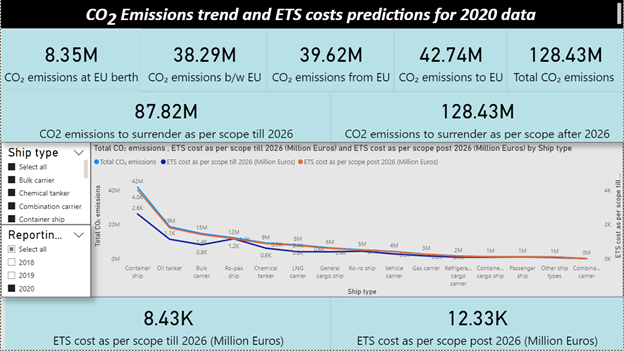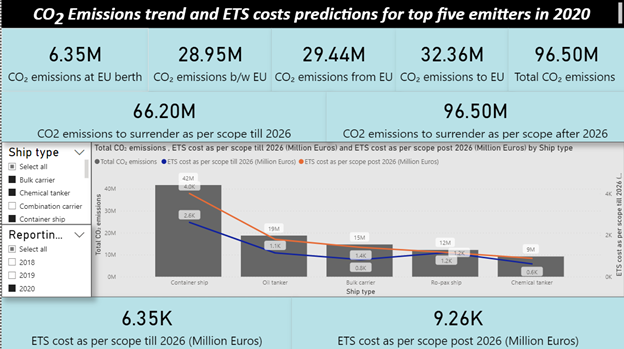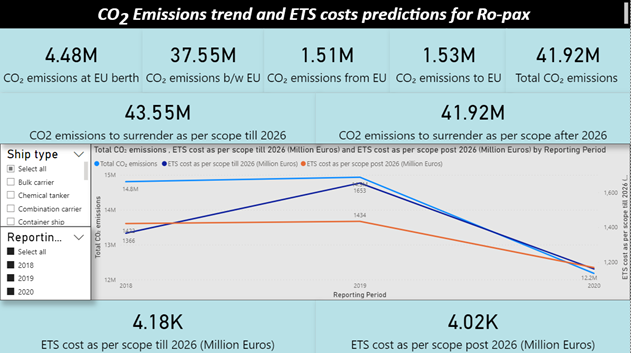EU ETS for Maritime Transport – What Gets Measured Gets Managed!
 The world cannot currently foresee the impending collapse of various institutions by paying little or no attention to the ongoing climate change crisis. This collapse along with limited non-financial disclosures by different sectors and major players causing significant emissions are a wake-up call to all the businesses, corporations, and nations across the globe. Consequently, the way the entire system may come crashing down in future can be corroborated from the fact that businesses can never run in a world that is failing. This eventually would affect the dynamics, comprising of people, society and the environment within which businesses operate, flourish, and grow.
The world cannot currently foresee the impending collapse of various institutions by paying little or no attention to the ongoing climate change crisis. This collapse along with limited non-financial disclosures by different sectors and major players causing significant emissions are a wake-up call to all the businesses, corporations, and nations across the globe. Consequently, the way the entire system may come crashing down in future can be corroborated from the fact that businesses can never run in a world that is failing. This eventually would affect the dynamics, comprising of people, society and the environment within which businesses operate, flourish, and grow.Hence, the contract between various institutions is being re-negotiated. The business of business cannot be only business any longer. Therefore, they are being called upon to directly account for the emissions they are responsible for. With this proactive approach, European union is combating the climate change crisis by acknowledging the fact that “transparency is power” which began by EU ETS for aviation sector in the year 2010 itself.
Considering various sectoral trends in emissions, institutions like European commission is working towards aligning all the sector-specific disclosures in ensuring the collective responsibility towards combating climate change.
Members of the European Parliament have voted to extend the scope of the EU Emissions Trading Scheme to the shipping industry and trialogue negotiations to finalize ETS reforms are on-going.
Institution’s right to pollute for free and shipping’s spun-out voyage towards decarbonization is finally coming to a halt with the extension of EU ETS to Maritime transport which will cover 100% of emissions between EU, at EU berth and 50% of Extra-EU voyages emissions from 2024 to 2026 and then covering 100% of Extra-EU voyages from 2027.
From 2027, the vessels above 400GT will be covered, possibly including ships performing service activities for offshore installations and the types of emissions covered will also expand under the proposals to include more greenhouse gas emissions like CH4 and NOX.
An ocean fund will be created to support Europe’s maritime sector in its decarbonization using 75% of the generated revenue from the auction of maritime emissions allowances.
Carbon and business leakage linked to re-routing and evasive port calls present a hurdle to maintain transparency in reporting. To combat this, the commission needs to set up a monitoring scheme and propose measures.
Failing to comply with the requirements of the directive will lead to bad publicity, penalty, obligation, and consequent expulsion order.
Combating climate change is a common goal but it must be reached by assigning differentiated responsibilities to higher emitters. Below insights stand evident of the same.

Data source – EU MRV emissions data (2018 v266, 2019 v206 & 2020 v156) available at THETIS-MRV (europa.eu) using 96 Euros per tonne of CO2
Total CO2 emissions in 2020 stand at 128.4 million tonnes and predicted ETS costs for the shipping industry will be 8.4 billion euros as per 2020 emissions data following the scope of emissions to be covered till 2026, of which 6.3 billion euros will be borne by the combined fleet of Containers, Bulkers, Tankers and Ro-pax vessels which accounts for 75% of total ETS costs.

Data source – EU MRV emissions data (2018 v266, 2019 v206 & 2020 v156) available at THETIS-MRV (europa.eu)
The total ETS cost will increase to 12.3 billion euros from 2027 as per 2020 emissions data and revised scope of emissions covered, but at the same time financial impact for RO-PAX contribution is negligible due to change in scope of emissions, as the most of emissions are between EU, as depicted below:-

Data source – EU MRV emissions data (2018 v266, 2019 v206 & 2020 v156) available at THETIS-MRV (europa.eu)
Stakeholders and investors want corporations to be transparent when it comes to emissions reporting. Hence, they need new approaches and tools where Verifavia, with its abundant experience in the domain, comes into the picture.
Operators will have to report aggregated EU MRV emissions for their fleet and verified aggregated emissions will have to be submitted to their responsible administering authority before 31 March each year. To ensure accurate, reliable and transparent reporting, Verifavia Shipping is providing support by offering independent and impartial expertise to shipping companies.
Thus, shipping companies must understand and manage their GHG risks to ensure long-term success in a competitive business environment.
- Samil Oberoi, EU MRV / IMO DCS Auditor Back to all Verifavia Shipping News





